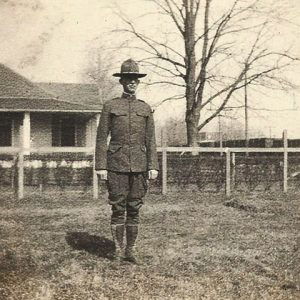calsfoundation@cals.org
Historic Arkansas [Textbook]
Historic Arkansas is a 1966 textbook written by historians John L. Ferguson and J. H. Atkinson and published by the Arkansas History Commission (now the Arkansas State Archives). The textbook was the result of legislation in the Arkansas General Assembly in 1963 and 1965 that specifically authorized the Arkansas History Commission “to prepare and publish a textbook of Arkansas history suitable for use in the eighth, ninth, and tenth grades.”
Historic Arkansas comprises ten units: 1) “Earliest Arkansas,” covering Native American history and European exploration and settlement, 2) “Pioneer Arkansas, 1803–1836,” encompassing the Louisiana Purchase, American settlement, and Indian Removal, 3) “Frontier Arkansas, 1836–1861,” covering the years between statehood and the Civil War, 4) “Confederate Arkansas,” with a focus upon the Civil War years, 5) “Radical Arkansas,” or those years of postwar Republican governance, 6) Conservative Arkansas, 1874–1898, from the years of “Redemption” to the growth of railroads, 7) “Progressive Arkansas: Political and Economic Change, 1898–1930,” which encompasses agricultural and industrial growth, with a focus upon timber, coal, and bauxite extraction, 8) “Progressive Arkansas: Social Patterns and Problems, 1898–1930,” with a focus upon World War I and segregation, 9) “Contemporary Arkansas: Economic and Social Crisis, 1930–1965,” covering the Great Depression, World War II, and the desegregation of Central High School in Little Rock (Pulaski County), and 10) “Contemporary Arkansas: The Government and the People, 1930–1965,” bringing political and cultural questions up to the time of the book’s publication.
Both Ferguson and Atkinson were highly respected Arkansas historians; Ferguson was then serving as the state historian, and Atkinson was a founding member and past president of both the Arkansas Historical Association and the Pulaski County Historical Society, in addition to being a longtime teacher and school administrator. The book they produced was an entirely new work rather than a revision of older textbooks.
Much of the material is now recognized as dated. For example, the route of the expedition of Hernando de Soto that was portrayed in the book is much farther south than the current reconstruction, entirely leaving out confirmed sites such as the Parkin Historic Site.
Other omissions and elisions are, in hindsight, more egregious. One noteworthy section on slavery reads as follows: “Slavery provided a stable, secure way of life in which people of both white and black races knew where they belonged, but it hindered the development of Arkansas in many ways. Money was invested in land and slaves, while mineral resources remained undeveloped and manufacturing made little progress.” In other words, the true evil of slavery lay in how it hindered economic development, rather than in the violence inherent in such a system of subjugation and forced labor. The book briefly acknowledges the role that slavery played in sparking secession, but Unionist sentiment and the existence of Black Union troops are not mentioned in the units focusing upon the war itself but, instead, the subsequent one called “Radical Arkansas.” Also expressed is a staple of the “Lost Cause” myth that characterizes the Reconstruction government as inherently corrupt: “Many of the delegates [to the 1868 state constitutional convention] simply enjoyed the huge salaries and compensation which they voted themselves while the carpetbaggers wrote the constitution.”
On the other hand, Historic Arkansas does acknowledge the persistence of poverty following the return of conservative Democrats to power, as well as the evils of the convict lease system and peonage. One chapter also highlights such farmer-worker movements as the Greenback Party, the Brothers of Freedom, the Agricultural Wheel, and the Union Labor Party, as well as how the Populist movement in general was sidelined due to election fraud. Also mentioned are such outbreaks of violence as the Flynn-Doran War of 1878 in Hot Springs (Garland County) and the Howard County Race Riot of 1883. But the re-emergence of the Ku Klux Klan in the twentieth century is partially excused with the line: “To many Arkansans it seemed that the world was changing too fast and going in the wrong direction.” A brief section on the Elaine Massacre of 1919 is constructed in such a way as to avoid choosing between the claims that the genesis of the violence was “that the Negroes had been planning a rebellion” or that Black sharecroppers “had sought economic justice and nothing else.”
The scope of Historic Arkansas is broad, tackling health, religion, education, daily life for Arkansans, the role of fraternities such as Masonic lodges, sports, the emergence of public libraries, and much more. Its shortcomings (revealed by later developments in historiography) aside, the framework it provides for analyzing the state’s history remains relevant in the twenty-first century.
For additional information:
Ferguson, John L., and J. H. Atkinson. Historic Arkansas. Little Rock: Arkansas History Commission, 1966.
Staff of the CALS Encyclopedia of Arkansas
 Education, Elementary and Secondary
Education, Elementary and Secondary Literature and Authors
Literature and Authors World War II through the Faubus Era, 1941 through 1967
World War II through the Faubus Era, 1941 through 1967 J. H. Atkinson
J. H. Atkinson  John Ferguson
John Ferguson 



Comments
No comments on this entry yet.